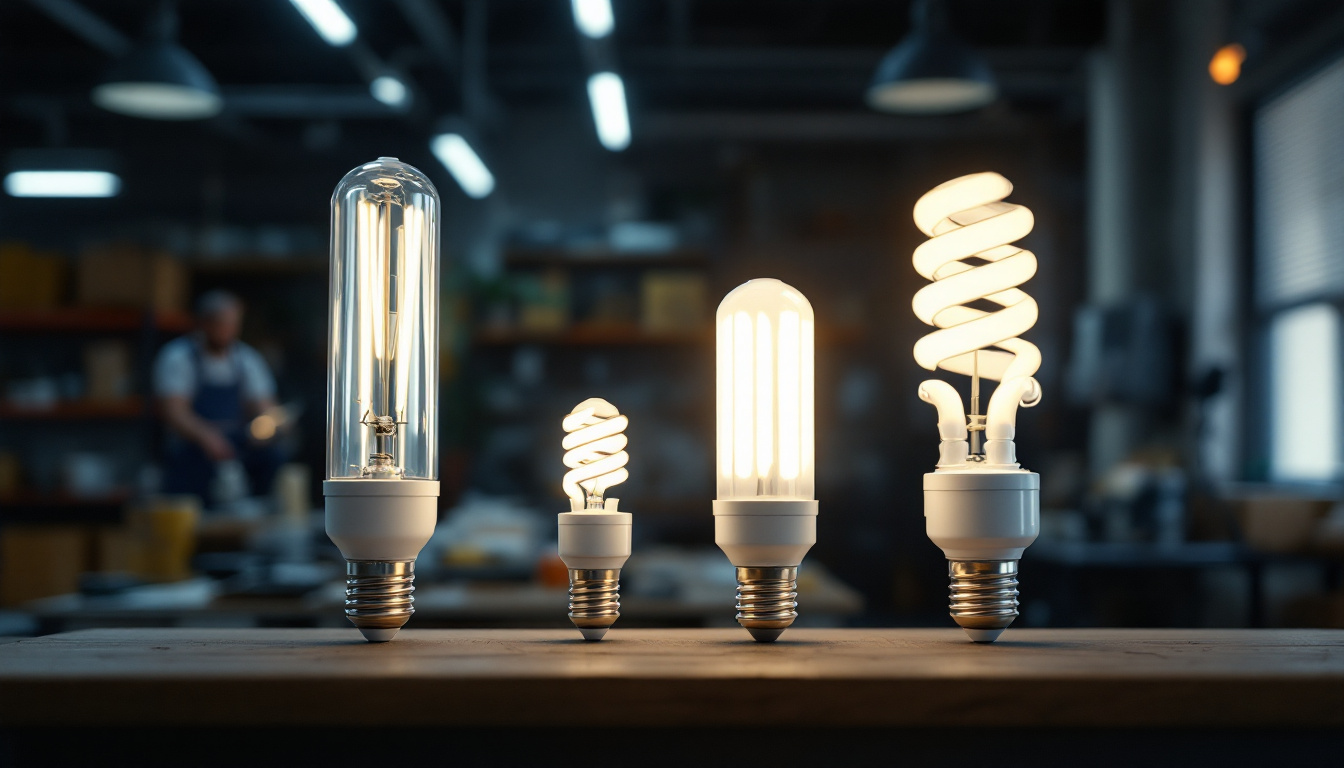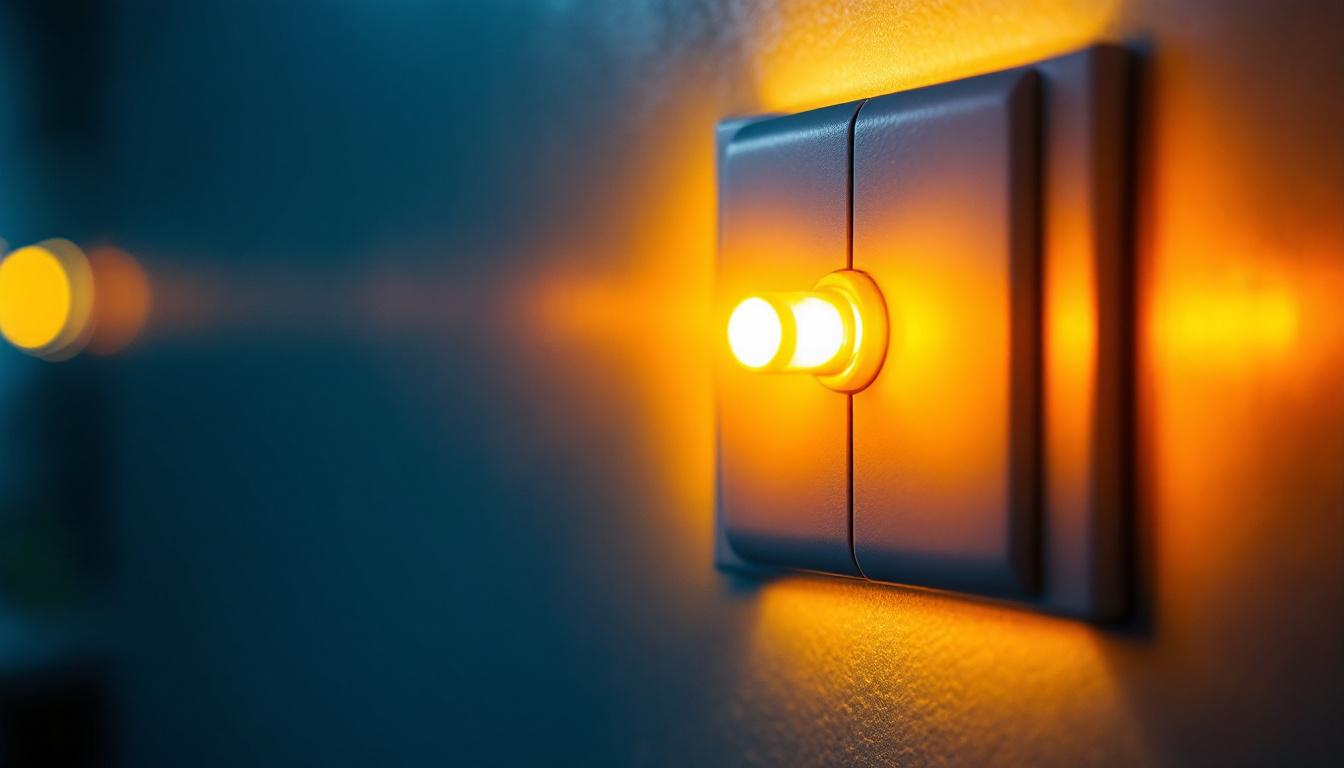
As the lighting industry continues to evolve, understanding the differences between various types of fluorescent bulbs is crucial for lighting contractors. Among the most commonly used fluorescent tubes are T12 and T8 bulbs. This guide delves into the key differences, advantages, and applications of T12 and T8 bulbs, providing essential insights for lighting professionals.
T12 and T8 bulbs are both types of fluorescent lighting, distinguished primarily by their diameter and efficiency. The “T” in their names stands for “tubular,” while the number indicates the diameter of the bulb in eighths of an inch. Thus, a T12 bulb has a diameter of 12 eighths of an inch (1.5 inches), and a T8 bulb has a diameter of 8 eighths of an inch (1 inch).
This difference in size leads to significant variations in performance, energy consumption, and application. As lighting contractors, understanding these differences is essential for making informed decisions when recommending lighting solutions to clients.
The physical size of T12 and T8 bulbs affects not only their appearance but also their compatibility with existing fixtures. T12 bulbs are larger and typically require more space in fixtures, while T8 bulbs are slimmer and can fit into more compact designs.
Additionally, T8 bulbs often come with different end caps, which can influence the type of fixtures they can be used with. This aspect is crucial for contractors to consider when replacing older T12 systems with T8 alternatives. Furthermore, the construction materials of these bulbs can also differ; T8 bulbs are often made with more advanced phosphor coatings that enhance light quality and color rendering, providing a more natural light that is easier on the eyes.
One of the most significant factors in choosing between T12 and T8 bulbs is energy efficiency. T8 bulbs are generally more energy-efficient than their T12 counterparts. They consume less wattage while providing comparable or even superior light output.
For instance, a typical T12 bulb may consume around 40 watts, whereas a T8 bulb can produce similar lumens with only 32 watts. This difference not only leads to reduced energy costs but also contributes to a lower carbon footprint, making T8 bulbs a more sustainable option. Additionally, many T8 bulbs are designed to be compatible with electronic ballasts, which can further increase energy savings and reduce flickering, enhancing the overall lighting experience in both commercial and residential settings.
Moreover, the long-term benefits of switching to T8 bulbs extend beyond just energy savings. The lifespan of T8 bulbs is generally longer than that of T12 bulbs, often lasting up to 30,000 hours compared to the 20,000 hours typical for T12s. This longevity means fewer replacements and reduced maintenance costs, making T8 bulbs a more cost-effective solution over time. As businesses and homeowners increasingly seek to reduce operational costs and environmental impact, the transition from T12 to T8 lighting becomes an attractive option, aligning with broader sustainability goals.
When it comes to performance, T8 bulbs often outperform T12 bulbs in several key areas. These include lumen output, color rendering, and lifespan. Understanding these performance metrics can help contractors make better recommendations based on their clients’ needs.
Lumen output is a measure of the total amount of visible light emitted by a source. In general, T8 bulbs provide a higher lumen output per watt compared to T12 bulbs. This means that for the same energy consumption, T8 bulbs can produce more light, making them an ideal choice for environments requiring bright illumination.
For example, a standard T8 bulb can produce about 3000 lumens, while a T12 bulb may only reach around 2500 lumens. This increased efficiency is particularly beneficial in commercial settings where lighting quality is paramount. Additionally, the higher lumen output of T8 bulbs can contribute to improved productivity in workplaces, as well-lit environments are known to enhance focus and reduce eye strain among employees.
The Color Rendering Index (CRI) measures how accurately a light source displays colors compared to natural light. T8 bulbs typically have a higher CRI, which means they render colors more accurately. This feature is especially important in settings such as retail stores, art galleries, and photography studios, where color accuracy is critical.
Contractors should consider the CRI when recommending lighting solutions, as it can significantly impact the overall aesthetic and functionality of a space. Furthermore, a higher CRI can lead to a more inviting atmosphere, encouraging customers to spend more time in retail environments or enhancing the visual appeal of artwork in galleries. This attention to color detail can also be crucial in industries like food service, where the accurate representation of food colors can influence customer choices.
Another crucial factor is the lifespan of the bulbs. T8 bulbs generally have a longer lifespan than T12 bulbs, often lasting up to 30,000 hours compared to the 20,000 hours typical for T12 bulbs. This extended lifespan translates to lower maintenance costs and less frequent replacements, making T8 bulbs a more economical choice in the long run.
For lighting contractors, recommending longer-lasting bulbs can enhance client satisfaction by reducing the hassle of frequent bulb changes and minimizing downtime in commercial settings. Moreover, the reduced frequency of replacements not only saves on labor costs but also contributes to sustainability efforts by decreasing the number of bulbs disposed of in landfills. This eco-friendly aspect can be a significant selling point for clients who are increasingly concerned about their environmental impact and are looking for energy-efficient solutions that align with their corporate social responsibility goals.
While T8 bulbs offer numerous advantages, cost considerations are always at the forefront of decision-making for contractors. Understanding the initial investment versus long-term savings is essential for making informed recommendations.
The initial cost of T8 bulbs is generally higher than that of T12 bulbs. However, this upfront cost should be weighed against the long-term savings associated with energy efficiency and lifespan. For contractors, providing clients with a detailed cost analysis can help justify the investment in T8 technology.
Additionally, many utility companies offer rebates and incentives for upgrading to energy-efficient lighting, which can further offset the initial costs associated with T8 installations.
When evaluating the long-term savings, it is essential to consider both energy costs and maintenance expenses. T8 bulbs, with their lower wattage and longer lifespan, can lead to significant savings over time. For instance, in a commercial setting where lighting is used extensively, the cumulative savings on energy bills can be substantial.
Furthermore, fewer replacements mean reduced labor costs associated with maintenance. This aspect is particularly appealing to businesses looking to cut operational costs.
Understanding the best applications for T12 and T8 bulbs can help contractors make informed recommendations based on specific client needs. Each type of bulb has its strengths and ideal use cases.
T12 bulbs have traditionally been used in various settings, including warehouses, industrial spaces, and some residential applications. Their larger size and lower cost can make them suitable for environments where high efficiency is not a primary concern.
However, as energy efficiency regulations tighten and the focus shifts toward sustainability, T12 bulbs are becoming less common in new installations. They may still be found in older buildings or facilities that have not yet transitioned to newer technologies.
T8 bulbs are increasingly favored in modern lighting applications. Their energy efficiency, higher lumen output, and better color rendering make them ideal for a wide range of settings, including offices, retail spaces, schools, and healthcare facilities.
In addition, T8 bulbs are often used in fixtures designed for specific applications, such as task lighting, ambient lighting, and display lighting. Their versatility makes them a go-to choice for contractors looking to provide comprehensive lighting solutions.
For contractors working with clients who currently use T12 bulbs, transitioning to T8 technology can be a significant step toward modernization. However, this transition requires careful planning and consideration.
One of the primary challenges in transitioning from T12 to T8 bulbs is fixture compatibility. While many fixtures designed for T12 bulbs can accommodate T8 bulbs, some may require modifications or complete replacement. Contractors should assess the existing fixtures and determine the best course of action for their clients.
In some cases, using T8 retrofit kits can provide a cost-effective solution, enabling the use of T8 bulbs without the need for extensive fixture replacements.
As mentioned earlier, many utility companies offer rebates and incentives for upgrading to energy-efficient lighting. Contractors should stay informed about available programs and help clients navigate the application process. This assistance can significantly reduce the cost of transitioning to T8 technology and make the upgrade more appealing.
In summary, the choice between T12 and T8 bulbs is a critical decision for lighting contractors. While T12 bulbs may still be prevalent in some applications, the advantages of T8 bulbs in terms of energy efficiency, performance, and lifespan make them the superior choice for most modern lighting needs.
Understanding the differences between these two types of bulbs, their applications, and the implications of transitioning from T12 to T8 is essential for providing clients with the best lighting solutions. By staying informed and adapting to the latest technologies, lighting contractors can ensure they meet the evolving needs of their clients while contributing to a more sustainable future.
Ready to elevate your lighting game? Look no further than LumenWholesale for all your T8 bulb needs and more. We provide lighting contractors with the highest quality, spec-grade lighting products at prices that can’t be beaten. Say goodbye to local distributor markups and hello to our extensive selection that meets rigorous industry standards. With LumenWholesale, you’ll enjoy the convenience of free shipping on bulk orders, ensuring you get the premium lighting you need at the best value. Don’t compromise on quality or price. Wholesale Lighting at the Best Value is just a click away. Make the smart choice for your clients and the environment with LumenWholesale today.

Discover the essential steps to bypass ballast for LED lighting and effectively train your team in modern lighting solutions.

Discover the pivotal role of light push switches in modern lighting installations.

Discover how enhancing basement lighting can boost efficiency for lighting contractors.

Discover expert tips and insights for lighting contractors on selecting and installing exterior flush mount lights.